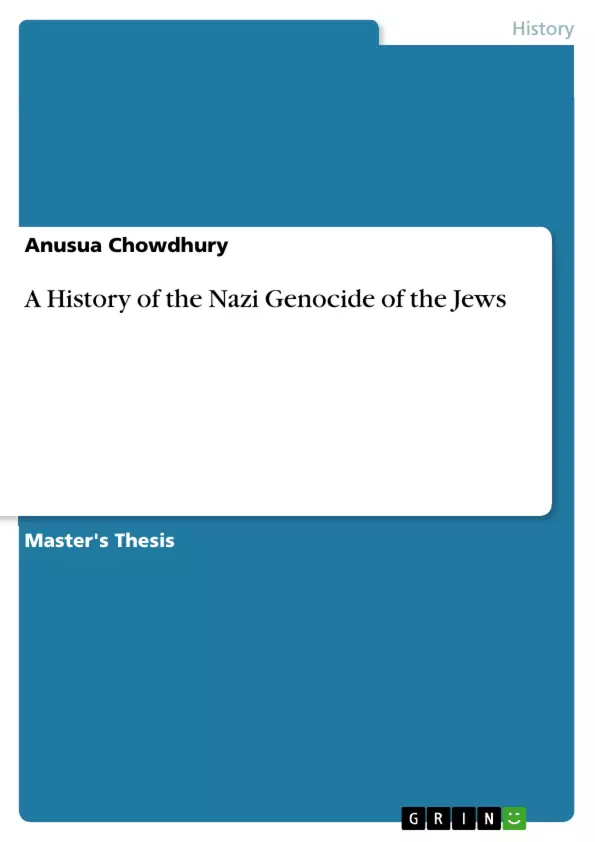The thesis maps the Jewish experience under the Nazi regime. It attempts to address the "Jewish question" after the Great War. It narrates the history of anti-Semitism, investigates the ghetto culture and finally ends with an assessment of the deadly concentration camps. "Acerbic anti-Semitism" and "rampant nationalism" resulted in the ghastly genocide of Jews or the blood-washed holocaust. The thesis operates at the interstices of three main lines of inquires: firstly, what is anti-Semitism? Secondly, what is the root cause behind the holocaust? Thirdly, how to interpret the human-made disaster or the holocaust from the contemporary perspective?
The thesis explores the deplorable situation of German Jews, and other war prisoners, as encapsulated in some anecdotes like "The Ghetto Diary" by Janus Korczak. His work delineates the wretched condition of German Jews, mainly the orphan children under his care. The thesis examines the condition of the ghettos, dispersed in the German-occupied territory. After the liquidation of the "ghetto culture", European Jews were expatriated to several concentration camps, based in Germany and Poland. The dissertation briefly reviews the theories that have been advanced regarding the human-made catastrophe or the holocaust that subverted the moral strength of human civilization.
Inhaltsverzeichnis (Table of Contents)
- Acknowledgement
- Abstract
- Introduction
- Chapter 1: What is Anti-Semitism?
- Chapter 2: Recluse Tower :the 'ghettos' of the holocaust
- Chapter 3: Road to the Dead valley: an examination of the Nazi concentration camp
- Conclusion
- Select Bibliography
- Maps and Illustration
Zielsetzung und Themenschwerpunkte (Objectives and Key Themes)
This dissertation explores the experiences of Jews under the Nazi regime, focusing on the rise of anti-Semitism, the development of ghetto culture, and the devastating impact of concentration camps. It examines the causes and consequences of the Holocaust, analyzing the human tragedy from a contemporary perspective.
- The historical evolution of anti-Semitism and its role in Nazi ideology.
- The impact of the Nazi regime on Jewish life, including the creation and functioning of ghettos.
- The systematic nature of the Holocaust, specifically focusing on the operation of concentration camps.
- The historical and contemporary significance of the Holocaust as a defining event in human history.
- The role of collaboration in the Eastern European context during the Holocaust.
Zusammenfassung der Kapitel (Chapter Summaries)
Chapter 1 provides a historical overview of anti-Semitism, defining its origins and exploring its evolution within the context of the Nazi regime. Chapter 2 delves into the creation and function of ghettos, examining the challenges faced by Jews living in these restricted environments. Chapter 3 focuses on the operation of Nazi concentration camps, highlighting the systematic nature of the Holocaust and the brutal treatment endured by prisoners.
Schlüsselwörter (Keywords)
The dissertation explores key concepts such as anti-Semitism, ghetto culture, Nazi genocide, Holocaust, concentration camps, and the 'Jewish Question'. The text utilizes historical evidence, including anecdotes from individuals like Janus Korczak, to provide insight into the human experience during this period.
- Quote paper
- Anusua Chowdhury (Author), 2014, A History of the Nazi Genocide of the Jews, Munich, GRIN Verlag, https://www.grin.com/document/1285229



